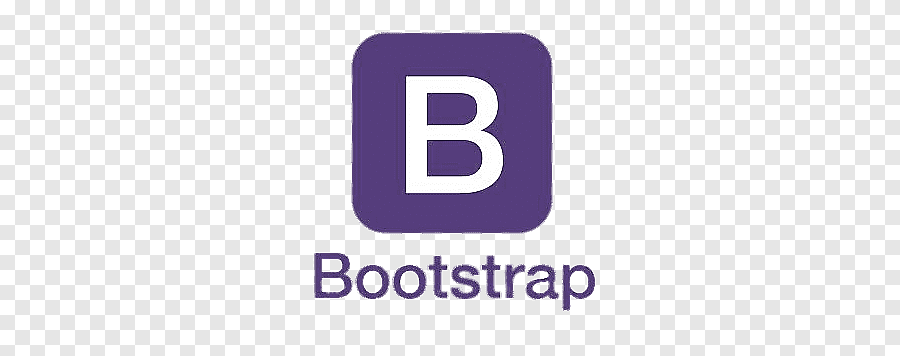khan Waseem
Fri Jan 27 2023
-3 min read
Unlock the Power of Bootstrap: A Comprehensive Guide

Bootstrap is an open-source front-end framework for web development. It was originally created by Twitter and is now maintained by the Bootstrap community. Bootstrap provides a collection of pre-designed, responsive, and customizable HTML and CSS components, such as navigation bars, buttons, forms, grids, and more, to help web developers quickly and easily build attractive and consistent web interfaces.
Key features and aspects of Bootstrap include:
- Responsive Design: Bootstrap is built with responsive web design in mind. It includes a responsive grid system that allows developers to create layouts that adapt to various screen sizes and devices, making it mobile-friendly out of the box.
- CSS and JavaScript Components: Bootstrap offers a wide range of ready-to-use CSS classes and JavaScript plugins that simplify common web development tasks. Examples include modal dialogs, carousels, tooltips, and navigation bars.
- Customization: While Bootstrap provides default styles and components, it’s highly customizable. Developers can easily modify the framework’s appearance and behavior by overriding default styles or using custom CSS classes. This allows for the creation of unique and branded designs.
- Cross-Browser Compatibility: Bootstrap is designed to work consistently across different web browsers, ensuring that your web applications look and function well for users using various browsers and versions.
- Community and Documentation: Bootstrap has a large and active community of developers who contribute to its development and provide support through forums and documentation. The official Bootstrap website offers comprehensive documentation and examples to help developers get started.
- Accessibility: Bootstrap is committed to accessibility best practices. It includes features and guidelines to help developers create accessible web applications that can be used by people with disabilities.
- Integration: Bootstrap can be easily integrated with other popular web development tools and frameworks, such as jQuery, Sass, and React, to enhance its functionality and streamline development.
Overall, Bootstrap is a valuable tool for web developers, both beginners and experienced professionals, as it simplifies the process of building responsive and visually appealing websites and web applications while maintaining flexibility and customizability.
Here’s a simple example of how to use Bootstrap to create a basic webpage with a navigation bar and a responsive grid layout:
<!DOCTYPE html>
<html lang="en">
<head>
<meta charset="UTF-8">
<meta name="viewport" content="width=device-width, initial-scale=1.0">
<title>Bootstrap Example</title>
<!-- Link to Bootstrap CSS -->
<link href="https://cdn.jsdelivr.net/npm/bootstrap@5.5.0/dist/css/bootstrap.min.css" rel="stylesheet">
<!-- Optional: Add custom CSS for your styles -->
<style>
body {
background-color: #f0f0f0;
padding: 20px;
}
</style>
</head>
<body>
<!-- Navigation Bar -->
<nav class="navbar navbar-expand-lg navbar-light bg-light">
<a class="navbar-brand" href="#">My Website</a>
<button class="navbar-toggler" type="button" data-toggle="collapse" data-target="#navbarNav" aria-controls="navbarNav" aria-expanded="false" aria-label="Toggle navigation">
<span class="navbar-toggler-icon"></span>
</button>
<div class="collapse navbar-collapse" id="navbarNav">
<ul class="navbar-nav">
<li class="nav-item active">
<a class="nav-link" href="#">Home <span class="sr-only">(current)</span></a>
</li>
<li class="nav-item">
<a class="nav-link" href="#">About</a>
</li>
<li class="nav-item">
<a class="nav-link" href="#">Services</a>
</li>
<li class="nav-item">
<a class="nav-link" href="#">Contact</a>
</li>
</ul>
</div>
</nav>
<!-- Content Section with Responsive Grid -->
<div class="container mt-4">
<div class="row">
<div class="col-md-6">
<h1>Welcome to My Website</h1>
<p>This is a simple example of a Bootstrap-based webpage with a navigation bar and responsive grid layout.</p>
</div>
<div class="col-md-6">
<img src="https://via.placeholder.com/300" alt="Sample Image" class="img-fluid">
</div>
</div>
</div>
<!-- Link to Bootstrap JavaScript and jQuery -->
<script src="https://code.jquery.com/jquery-3.6.0.min.js"></script>
<script src="https://cdn.jsdelivr.net/npm/bootstrap@5.5.0/dist/js/bootstrap.min.js"></script>
</body>
</html>
Code language: HTML, XML (xml)In this example:
- We include the Bootstrap CSS and JavaScript files by adding
<link>and<script>tags to the Bootstrap CDN (Content Delivery Network) in the<head>section. - We create a navigation bar using Bootstrap’s
navbarcomponent, complete with a logo and responsive navigation links. - We use a responsive grid system with two columns to structure our content.
- Custom CSS is added to style the background and provide some spacing.
Bootstrap simplifies the process of creating a responsive and visually appealing webpage by providing pre-designed components and a responsive grid system, allowing developers to focus more on the content and functionality of their web applications.
This is a Office Documentation for bootstrap : https://getbootstrap.com/docs/5.3/getting-started/introduction/